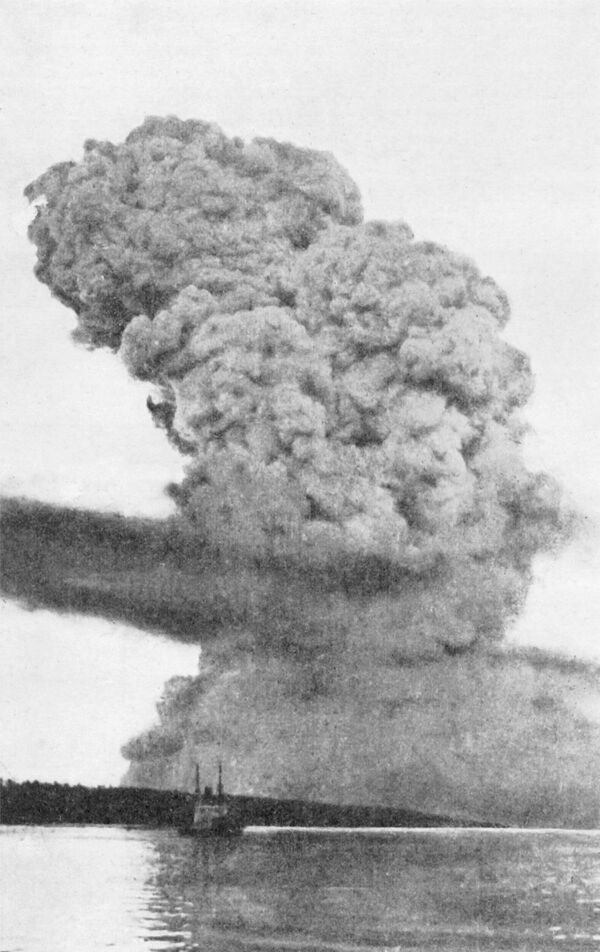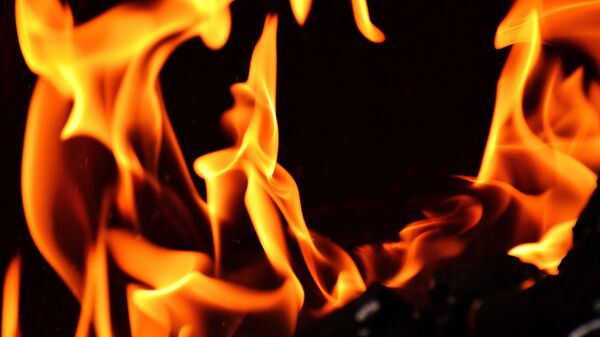It was the most devastating man-made non-nuclear blast in history but nobody was ever brought to justice for the Halifax Explosion, which ripped through the city in Nova Scotia 100 years ago.
On Wednesday, December 6, hundreds of people are expected to gather in Fort Needham Memorial Park to commemorate the moment when a French munitions ship, the SS Mont-Blanc, blew up 20 minutes after colliding with a Norwegian vessel and catching fire.
John Boileau, a historian and retired Canadian Army colonel, has written a book, 6.12.17 The Halifax Explosion about the disaster.
"After the collision the Mont-Blanc was grounded at Pier 6 and 20 minutes later kaboom! The ship was instantly shredded. The blast wave measured 7,600 meters per second. Around 1,600 people were killed instantly and another 400 or so died later, although it's possible the final death toll was 2,500 because there were a lot of unregistered wartime workers, as well as gamblers, prostitutes and bootleggers in town who wouldn't have been registered," Mr. Boileau told Sputnik.

500 Children Among the Dead
Among the dead were 500 children and 25,000 people were made homeless.
"To make matters worse the worst blizzard in history hit the next day. The explosion was heard 160 miles away. But some people who claim to have heard it had probably felt it, rather than heard it. It was a subsonic infracted wave which cracked windows 100 miles away," Mr. Boileau told Sputnik.
He said the tragic story began the night before the blast.
Halifax is the second largest harbor in the world and was a popular and convenient meeting up point for convoys traveling from North America to Europe and trying to avoid attack by German submarines.
WO Albert Mattison and 6 volunteers sailed in #HMCSNiobe's steam pinnace toward SS Mont-Blanc in a futile effort to render assistance. While the group was boarding SS Mont-Blanc exploded, killing the seven men instantly #HfxExplosion100 #Remember RCN pic.twitter.com/8PuPSlCpJL
— MARLANT (@RCN_MARLANT) November 29, 2017
French Ship Hoped to Meet up With Convoy
The SS Mont-Blanc, which was loaded with 2,866 tons of explosives and barrels of aviation fuel, was sailing from New York to Europe but had failed to make it into port the previous evening and was forced to wait for submarine nets to be lifted.
The Imo, which was empty, was heading to New York to restock with supplies for the starving people of Belgium and was coming out of the port.
"It was a bright, cold, crisp morning and there was nothing to impede the vision of the two captains. But navigation errors were made. The skipper and pilot of the Imo were killed so we will never know why he did not obey the first warning whistle of the Mont-Blanc," Mr. Boileau told Sputnik.
The collision triggered a fire in the Mont-Blanc's hold.
Tragically hundreds of people looked out of their windows when they heard the collision and when, at 9.04am, the ship exploded many of those who survived were blinded by shards of window glass.
Morse Code Last Goodbye
Mr. Boileau said one of the most poignant documents he reviewed while writing the book was a Morse code message sent by Vincent Coleman, who was killed as he tried to warn train drivers not to bring locomotives into the city.
"Hold up the train. Ammunition ship afire in harbour making for Pier 6 and will explode. Guess this will be my last message. Good-bye boys," wrote Coleman.
The explosion was the worst disaster in Canadian history and hundreds of soldiers from Halifax who were fighting on the front in Flanders would later discover their wives and children had been killed.
A Mi'kmaq settlement, of First Nations Canadians, on the opposite bank of the harbor was also destroyed.
So who was to blame?
Charges were brought against the captain of the Mont-Blanc, Aimé Le Médec, against the pilot, Francis Mackey, who had been tasked with guiding the ship into port, and against a Canadian navy officer, Evan Wyatt, who was ultimately responsible for controlling traffic in and out of the harbor.
Dec 5, 1917 — French cargo ship SS Mont-Blanc, laden with explosives from New York, is lying off Halifax, Nova Scotia, waiting to enter port the next morning #100yearsago pic.twitter.com/VHu8sKxDZD
— Patrick Chovanec (@prchovanec) December 6, 2017
Canadian Officer Made a 'Scapegoat'
The charges were later dropped but Mr. Boileau said the Canadian navy was blamed for the disaster and Wyatt in particular was made a "scapegoat."
"Captain Le Médec was later given the Legion d'Honneur by the French and Mackey lost his piloting license but Wyatt was made a scapegoat and was forced out in disgrace. He later moved to Massachusetts and then Florida. His descendants still live in the US," Mr. Boileau told Sputnik.
Many of the survivors bore for the rest of their lives strange blue marks on their faces — the result of dirty water raining into their wounds — which were known as "explosion tattoos".
He said safety improvements were later introduced in an attempt to prevent a repeat of the disaster but during World War II two US ships loaded with TNT caught fire in the harbor and in 1945 an ammunition dump, known as the Bedford Magazine caught fire a few days after Germany surrendered.
"It is amazing how the disaster still resonates with people. I have done several talks about it and it's amazing the amount of people who had grandparents, aunts or uncles who were affected," Mr. Boileau told Sputnik.


